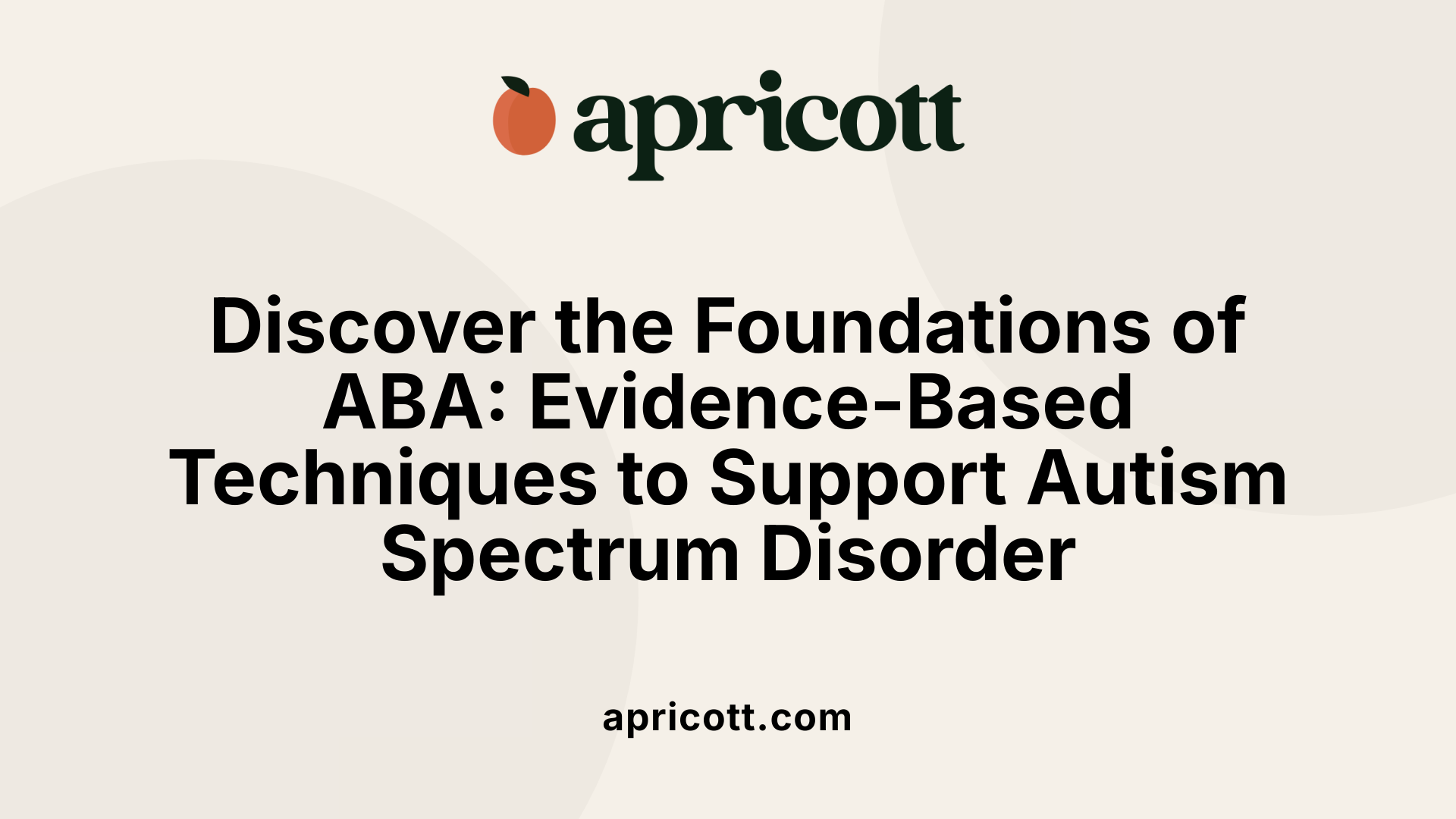December 2, 2025
Unlocking Potential: The Role of ABA in Autism Support
Applied Behavior Analysis (ABA) has emerged as a cornerstone therapy for supporting individuals with autism spectrum disorder (ASD). Grounded in scientific research and tailored interventions, ABA focuses on enhancing positive behaviors and reducing challenges faced by people with autism. This article explores the principles, methods, and benefits of ABA therapy within the context of the SPELL Autism Framework, which emphasizes structured, supportive approaches to developmental growth.

The therapy is called Applied Behavior Analysis (ABA). It is a research-based behavioral therapy designed specifically for individuals with autism and other developmental disorders.
ABA uses principles of behavior science to increase positive behaviors and decrease negative ones. This approach is grounded in extensive scientific research that demonstrates its effectiveness in improving socialization, communication, and expressive language in people with autism.
The main goals are to teach functional communication, enhance social skills, increase independence, and reduce challenging behaviors through individualized treatment plans developed by a Board Certified Behavior Analyst (BCBA).
ABA employs methods such as prompting to guide behaviors, reinforcement to encourage positive actions, and increasing functional communication. Techniques include:
This evidence-based therapy is customized based on each individual's unique needs, ensuring the most effective interventions for improving quality of life and behavioral outcomes.

Applied Behavior Analysis (ABA) therapy is typically delivered by a team of qualified professionals. Central to this team is the Board Certified Behavior Analyst (BCBA), who is responsible for assessing the individual's needs, developing the treatment plan, and overseeing its implementation. Alongside BCBAs, Registered Behavior Technicians (RBTs) and other trained therapists carry out the day-to-day therapy sessions based on the plan formulated by the BCBA.
ABA therapy can be provided in a variety of environments. Common settings include the child's home, schools, and community centers, allowing for adaptability to the individual's daily life. This flexibility ensures that the strategies can be practiced in naturalistic contexts, which supports generalization of learned behaviors.
Professionals delivering ABA therapy hold specific certifications and training in behavioral science and autism spectrum disorder (ASD) interventions. BCBAs are rigorously trained and certified specialists who understand the complexities of autism and behavioral analysis. RBTs also receive specialized training focused on implementing ABA strategies safely and effectively under the supervision of BCBAs. Additionally, therapists like licensed clinical psychologists and speech therapists with expertise in ASD may contribute to comprehensive care.
| Professional Role | Certification/Training | Key Responsibilities |
|---|---|---|
| Board Certified Behavior Analyst (BCBA) | Graduate-level certification in ABA | Assessment, treatment planning, supervision |
| Registered Behavior Technician (RBT) | Certification focused on ABA techniques | Direct implementation of ABA interventions |
| Licensed Clinical Psychologist | Clinical license with ASD expertise | Specialized behavioral and psychological evaluation |
| Speech Therapist | Professional license in speech pathology | Communication-based therapy within ABA framework |

Discrete Trial Training, or DTT, is a highly structured teaching method under the umbrella of Applied Behavior Analysis (ABA). It involves breaking down skills into small, manageable tasks and guiding the child through these tasks in a step-by-step manner. Originally, DTT sometimes included the use of punishment to reduce unwanted behaviors, but modern practices have moved away from punishment-based techniques.
While early ABA approaches did incorporate punishment methods, current ethical standards and research discourage their use. The focus has shifted toward positive reinforcement techniques that encourage desirable behaviors without using punitive measures.
Pivotal Response Treatment offers a less structured, more naturalistic approach compared to DTT. It emphasizes learning through play and the child’s own interests. PRT uses natural reinforcements in everyday situations, helping children engage more spontaneously and meaningfully with their environment.
The Early Start Denver Model combines elements of play-based learning with traditional ABA methods like DTT. ESDM targets multiple developmental goals simultaneously, such as social, cognitive, and language skills, making it a comprehensive intervention for young children.
Together, these ABA strategies provide a range of methods from highly structured to naturalistic, tailored to support diverse needs in children with autism.

ABA therapy has been shown to significantly enhance social interactions and communication skills. By employing techniques like prompting and reinforcement, ABA helps individuals with autism develop functional expressive language, leading to better engagement with peers and caregivers.
ABA focuses on increasing desirable behaviors through positive reinforcement. It aids individuals in acquiring new skills that are important for daily living, such as self-care and academic tasks. This approach encourages consistent skill-building that extends beyond therapy sessions.
ABA strategies are designed not only to reduce challenging behaviors like aggression and self-injury but also to teach functional alternatives. By focusing on socially significant behaviors, ABA helps manage these co-occurring challenges effectively, improving overall quality of life.
ABA emphasizes techniques that can be implemented in home settings. Families are often taught strategies to reinforce positive behaviors and communication skills, promoting consistency and generalization of learned behaviors across environments.
A Board Certified Behavior Analyst (BCBA) plays a crucial role in starting ABA therapy by conducting a thorough assessment of the child's unique needs and abilities. This initial evaluation helps identify specific behaviors to target and informs the selection of appropriate therapeutic strategies. Through direct observation and data collection, the BCBA ensures the intervention aligns with the individual's developmental profile.
Individualized treatment plans are essential because autism spectrum disorder (ASD) manifests differently in each person. Tailoring therapy to the child's specific strengths and challenges allows for more effective behavior change and skill acquisition. These plans focus on socially significant behaviors and teach functional alternatives, ensuring meaningful improvements in daily life.
ABA programs can be comprehensive or focused. Comprehensive interventions address multiple developmental areas such as communication, socialization, and behavior across various settings. Focused interventions target specific behaviors or skills that need improvement. Selecting between these models depends on the child's current functioning and therapy goals.
The length of ABA therapy varies widely. It depends on the individual child's needs, their rate of progress, and the therapy approach used. As the child's skills develop, treatment plans are regularly updated to introduce new objectives or reduce intervention intensity. This adaptability ensures therapy remains relevant and effective over time.
ABA therapy represents a research-backed, adaptable approach within the SPELL Autism Framework that prioritizes individualized support and skill development for people with autism. With delivery by skilled professionals and a variety of methodologies tailored to unique needs, ABA continues to shape meaningful progress in social, communicative, and behavioral domains. As research expands and techniques evolve, integrating ABA with supportive frameworks remains key to unlocking the potential of individuals on the autism spectrum.